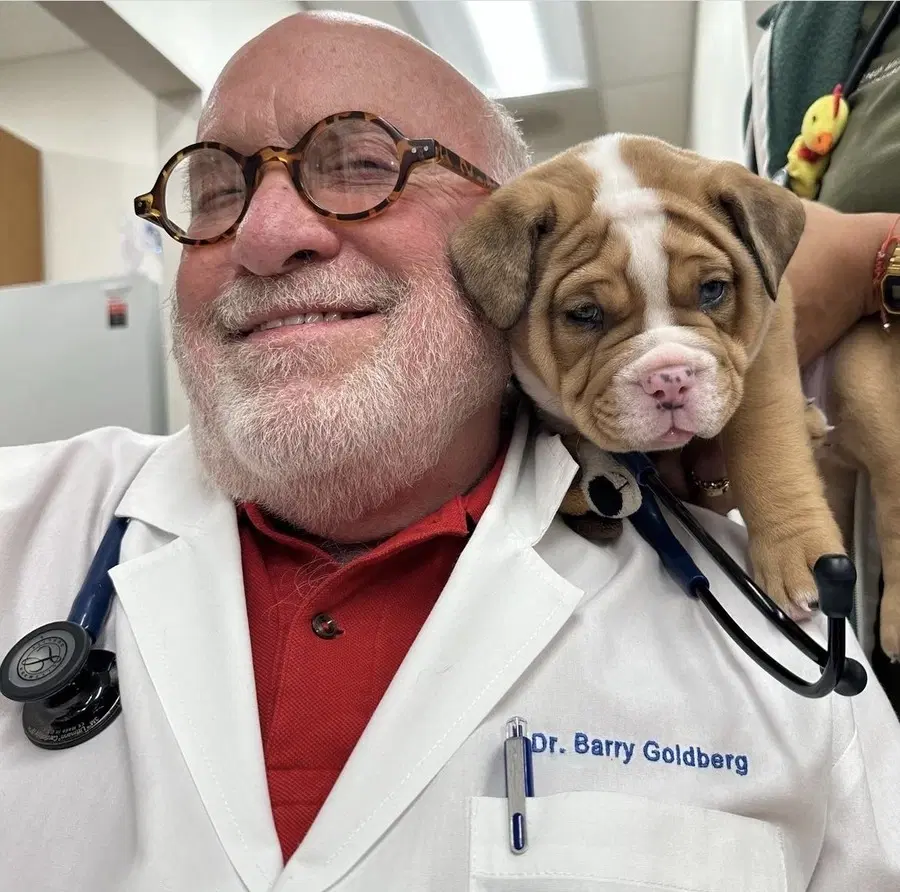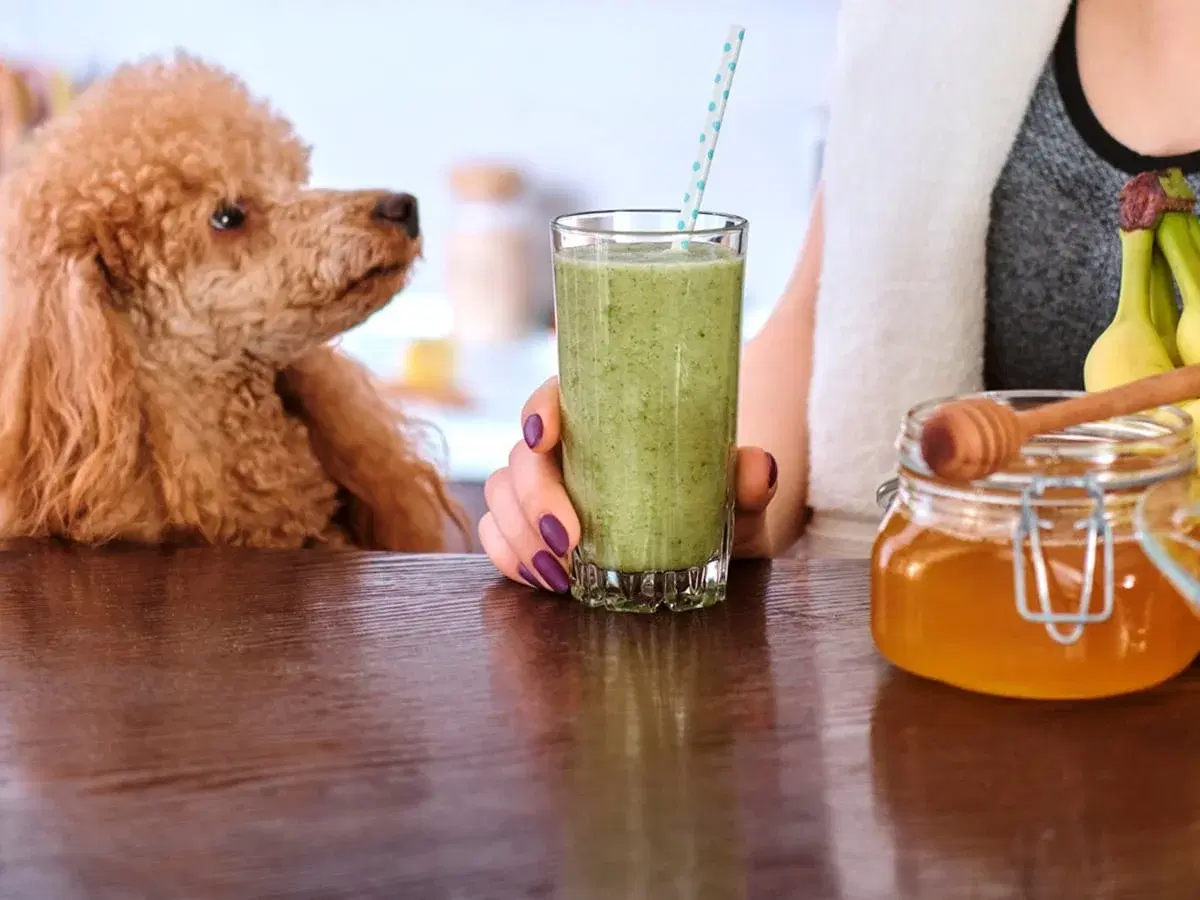Honey is used worldwide to sweeten food and drinks. Many people use honey when they’re sick with a sore throat or feel under the weather since it can help soothe inflammation, among other benefits.
Since honey is so beneficial to our health, we have to wonder, do the same benefits apply to our dogs? Even though we might not like to think about it, our pets get sick too, and honey might be able to help ease some of their discomfort.
As pet parents, one of our biggest concerns is keeping our pets safe and happy. To do this, you need to know what foods your dog can and can’t eat. Out of all the foods that your dog could get into, honey is probably the least likely, since dogs can’t really use a squeeze bottle.
However, you might have heard about the health benefits of honey for humans and want to learn more about what it could do for your dog. We’re here to help. At Spot Pet Insurance, we understand your desire to help your pet be happy and healthy, and we want to help you learn more about how to do that.
Honey does have plenty of health benefits, but is it safe for our dogs to eat? Let’s find out.
Is honey safe for dogs to eat?
Honey is full of natural sweeteners, vitamins, and minerals, but just because a food is healthy for humans, it doesn’t necessarily mean it’s safe for dogs to eat. Fortunately, dogs can eat small amounts of honey.
Honey is pretty easy for dogs to digest since bees have already done a lot of the work. However, it still isn’t a good idea to give your dog a lot of honey since it does have a lot of sugar.
Before giving your dog any new foods, you should consult a vet. They can help you figure out what can benefit your dog nutritionally based on their overall health and weight.
Honey has many benefits for dogs, and it’s usually safe to eat. However, there are some dangers you need to keep a lookout for too.
What health benefits does honey have?
Honey is very well-known for its medicinal properties, which we’ll discuss more later. Part of the reason honey is so beneficial is that it has many vitamins and minerals. Most of these are already in your dog’s food, but when your pup isn’t feeling well, an extra boost can help.
Honey contains things like:
Iron
Enzymes
Protein
Sulfur
Vitamin C
Vitamin B
Magnesium
Phosphate
Potassium
Sodium chloride
All of these nutrients are part of a balanced diet for dogs, and they also might be able to help your dog when they’re sick, but more on that later.
What are the dangers of giving your dog honey?
Honey is wonderful, but it’s not without its flaws. If your dog suffers from diabetes, it’s probably not a good idea to give your dog honey since it has a lot of sugar. Too much sugar might also cause digestive issues.
Raw honey, which is the type with the most benefits, shouldn’t be given to puppies. The same rule applies to dogs with weak immune systems (immunocompromised), even as adults. Raw honey usually has botulism spores, and puppies and immunocompromised dogs can’t fight them off like adult dogs with strong immune systems.
Botulism can cause paralysis, so if your dog has a weak immune system, it’s a good idea for them to avoid honey.
The sugar in honey can also cause dental problems if a dog’s teeth aren’t brushed regularly. If you decide to give your dog honey, you should probably brush your dog’s teeth after you give it to them.
Another potential issue is allergies. Although honey is rumored to help dogs overcome allergies, it can cause problems in dogs that are allergic to bees. It can cause ulcers or sores to form in the mouth, as well as other allergic reactions, like hives.
Can honey actually help my dog when they’re sick?
Honey is a very popular home remedy since some of the vitamins and minerals in it can help relieve symptoms of certain illnesses. Does this also apply to dogs?
Yes, honey can help relieve some issues, although it isn’t necessarily a cure for those problems.
Honey is very useful in soothing sore throats and stomach ulcers. This sweet substance is good at coating the digestive tract, and it can help kill some of the bacteria causing the problem. It also helps your dog if they have a cough that’s bothering them.
The enzymes in honey can also help your dog with digestive problems, so if your dog is constipated or eating less than normal, honey might help them get back on track.
Honey can also give your dog short bursts of energy. If it’s mixed with other ingredients, like lemons or cinnamon, it can help your dog break down and process fat so that they can lose weight faster.
Some types of honey can be used to treat burns, cuts, infections, and hotspots. Since it has antibacterial and antifungal properties, it can soothe inflammation and kill bacteria, and it’s good for the skin. A lot of dog shampoos contain honey because of the benefits to the skin and fur of dogs.
How does honey help with allergies?
You may have heard somewhere that honey can help cure allergies. This claim hasn’t been scientifically proven, but honey does contain some pollen. If your dog is allergic to pollen and not some other environmental allergen, the pollen in the honey might help build up your dog’s tolerance to the pollen.
This depends on what your dog is allergic to and what kind of honey you buy, and there isn’t really any scientific proof that this is the case. However, if you are looking for something that may help, you could try honey.
What’s the best way to serve my dog honey?
The easiest way to give your dog honey is to give them a small spoonful. You could also try serving them honey by drizzling it on their dog food. We wouldn’t recommend doing this too often, though. It would be better as an occasional treat.
There are also plenty of doggy biscuit recipes that contain honey. If you can find one that your pup likes, that would be a great way to give your dog honey.
Another way to feed your dog honey would be to use it to hide the taste of any medication that your dog has to take. The sweetness of the honey is a great way to distract your dog from the taste of the medicine.
You could also consider dipping another treat into the honey, like a banana, but you should be careful about the portion size since most fruits have a high sugar content as well.
How much honey should I give my dog?
Now that we know the benefits, the risks, and how to serve dogs honey, the final question we need to consider is how much honey dogs can safely eat. We’ve mentioned that the high sugar content makes too much honey unhealthy for your dog.
One way you can figure this out is by calculating how many calories your dog eats per day and then calculating 10% of that. Honey is a treat for dogs, and treats should only take up about 10% of your dog’s daily calorie intake.
However, honey shouldn’t be your dog’s only treat, so you should factor in other foods as well. Your best option is to discuss it with your dog’s vet. They can advise you on how much is good for your pup based on their weight, size, and overall health.
Healthy and delicious
Honey is, unsurprisingly, a great treat for your dog to try. Not only does it help keep your dog healthy if given in small amounts, but it can also help your dog feel better when they are sick.
Raw honey is excellent for sore throats and coughs. When used in dog shampoo, it will help your dog’s coat and skin stay healthy and soft.
You do need to make sure that you only give small amounts of honey to your dog since too much honey can cause dental issues and other potential health problems. You also need to keep raw honey away from puppies and immunocompromised dogs since their immune systems don’t have the strength to fight the botulism spores that are in raw honey.
Aside from a couple of issues, honey can make an excellent addition to your pup’s diet, as long as their vet gives the okay. Now, if your dog is feeling a little under the weather, you know another way to help them feel better.
What Your Dog Can Eat As Well
There’s no shame in wanting to give our dogs whatever food will make them happy. There just happens to be many other choices out there that are much healthier and more nutritious than pretzels. Here is a list of all the junk foods that your dog can eat.
Fruits
There are many fruits that dogs can eat which are packed with vitamins, dietary fibers, and antioxidants. The best are berries like strawberries, blueberries, cranberries, and raspberries. Dogs can eat bananas, oranges, apples, melons, mangos, and pineapples. Make sure fruits with pits, stems, cores and seeds have been ridden from these items. Several of them are choking hazards and peach pits can be toxic. Grapes of any kind are poisonous to dogs, and even raisins shouldn’t be given to them.
Seafood
When seafood is free from shells, tails, bones, and legs, they are safe for a dog to eat. Dogs can have lobster, shrimp, salmon, crab, tuna, flounder, and a variety of other fish that is lower in mercury. Fish with too much mercury fed too often to our dogs can cause mercury poisoning. Uncooked or undercooked seafood can contain harmful pathogens and bacterium like salmonella which can make a dog extremely ill. Always ensure that seafood is thoroughly cooked before feeding it to your dog.
Beans
Beans can be great sources of dietary fiber and proteins which are necessary for a dog’s health. Dogs can have a wide variety of beans, including lima beans, pinto beans, black beans, garbanzo beans, soybeans, butter beans, kidney beans, navy beans, and even green beans. Beans should always be cooked thoroughly and fed to dogs in moderation to avoid tummy aches. Beans shouldn’t replace meat in a dog’s diet, since the meat they eat is a richer source of proteins.
Vegetables
As stated earlier, garlic and onions contain toxins that are bad for dogs, and even seasonings containing traces of these vegetables could cause problems. Avocado is another poisonous food because it contains a toxic chemical called persin. Other veggies are considered great sources of fiber and vitamins for dogs. Dogs can eat carrots, pumpkins, spinach, celery, brussels sprouts, broccoli, kale, and many other vegetables instead.
Nuts
Most nuts aren’t toxic to dogs, save for walnuts and macadamia nuts. Other nuts aren’t necessarily poisonous, but they can contain lots of salts, fats, and proteins that are difficult to digest. They also aren’t very practical because they can be choking hazards due to their shapes, sizes, and shells. Cashews, almonds, and pistachios are fine for dogs to eat moderately, especially when they are made into butter which is safer to eat in terms of obstruction.

Dr. Goldberg (DVM) has owned and operated 12 animal hospitals throughout his career and served as Senior Director of Innovation, designing medical products to be utilized in animal hospitals. Today, he provides dental services to 75 pet stores and salons.
*Jan 2019 to April 2024 administrator claims data.
Burke, Anna. “Can Dogs Eat Honey?” American Kennel Club, American Kennel Club, 4 Aug. 2022, www.akc.org/expert-advice/nutrition/can-dogs-eat-honey/.
Arnold, Victoria Lynn. “Can Dogs Eat Honey?” PetMD, PetMD, 15 Feb. 2024, www.petmd.com/dog/nutrition/can-dogs-eat-honey.
Burke, Anna. “How Many Treats to Give a Dog a Day.” American Kennel Club, American Kennel Club, 7 Feb. 2023, www.akc.org/expert-advice/nutrition/how-many-treats-can-dog-have/.
The information presented in this article is for educational and informational purposes only and does not constitute or substitute for the advice of your veterinarian.












